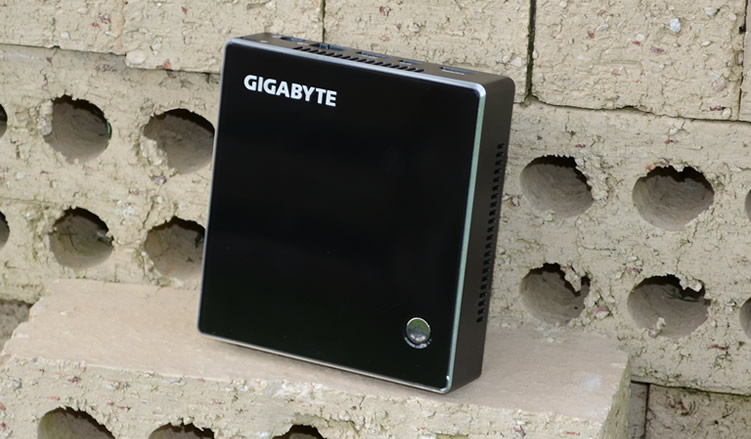Final Thoughts
Although there's no avoiding the fact that the Core i5-3337U isn't up to snuff with Intel's desktop chips, often falling behind even the Pentium G2020, the Gigabyte Brix is pretty snappy for a system that measures only 4.5 x 4.24 x 1.18". Both the i5-3337U and the G2020 are based on Ivy Bridge and feature two cores with a 3MB L3 cache. They differ in clock speed and number of available threads.
The Pentium G2020 is set at 2.9GHz and lacks HyperThreading which limits it to two threads, while the i5-3337U runs at only 1.8GHz but can jump to 2.7GHz with Turbo Boost and supports four threads courtesy of HT. These configurations made for some competitive results between the two parts, though it's worth noting that the G2020 is still pretty slow by desktop standards, so even if the i5-3337U was consistently faster – and it isn't – it would be a small victory in the grand scheme of things.
Although they may share performance margins, the i5-3337U's value comes into question when you consider the fact that the G2020 is much cheaper at $70 versus the i5's manufacturer suggested price of $225. As we mentioned earlier, Intel's NUC systems have witnessed limited enthusiast interest and we fear the Brix will suffer a similar fate considering it's $420 up front sans RAM, SSD and OS.
Dedicated TechSpot readers may recall a recent article in which we detailed the process of building a small form factor gaming, and that makes for a timely comparison to this barebones kit. If we crammed 8GB of RAM, a 128GB SSD with Windows 8, the Pentium G2020 on an Asrock Z77TM-ITX into the fanless Akasa Euler chassis, it would cost $620. You could even do a similar i5 Haswell build for under $750.
In addition to being cheaper and faster, selecting each component provides more options all around, not least in customizability and connectivity. As a drawback, the Akasa Euler is larger, but you can still mount it to the back of a monitor and hide it from view if that's a priority – hardly a deal breaker. If you insist on avoiding building a system from scratch, we'd also seriously consider buying a laptop over the Brix.
An i5-3337U-powered laptop can be had for less than $750 and that price includes everything you need for a complete experience: an integrated display, input hardware and an operating system. Notebooks also come with a battery which is obviously useful for mobile computing, but it can also serve as an uninterruptible power supply (UPS) when the notebook is docked with full-size peripherals.
For its size, the Brix's performance managed to impress a few of my tech-savvy friends, but that doesn't necessarily make it a practical choice. After all, who needs a pocket-sized desktop computer? The point of such a machine becomes moot when its primary advantage isn't really relevant. Monitors typically span 24" these days and that's big enough to hide just about any ultra-compact PC.
With such high pricing, NUC barebones systems still don't seem quite ready for primetime. That isn't to say nobody should own a Brix – just not those who can't directly benefit from its impressively diminutive body. Although the machine is fast enough for general use, we'd be fools not to recommend one of the better value options over Intel/Gigabyte's solution to small-form-factor computing.
score
Pros: Decent everyday performance in a ridiculously compact package that's at least somewhat customizable as you outfit the barebones kit with your own RAM, SSD, Wi-Fi module and OS.
Cons: Poor value compared to similar desktops/laptops, especially after you factor in the cost the above-mentioned parts. Our build would have cost $750, which is hard to justify in our opinion.



